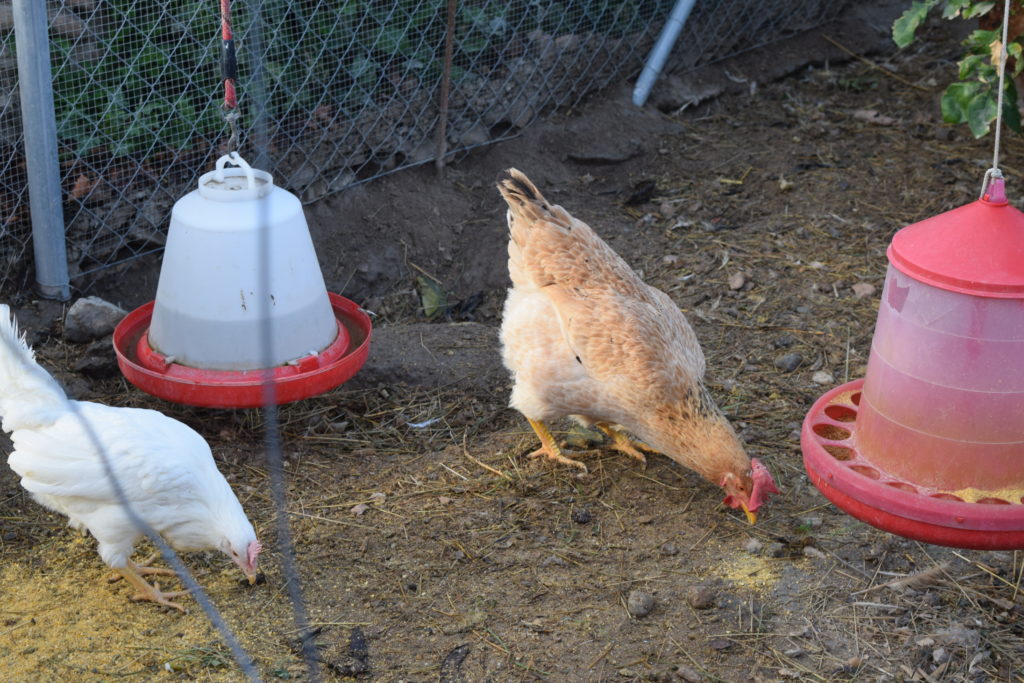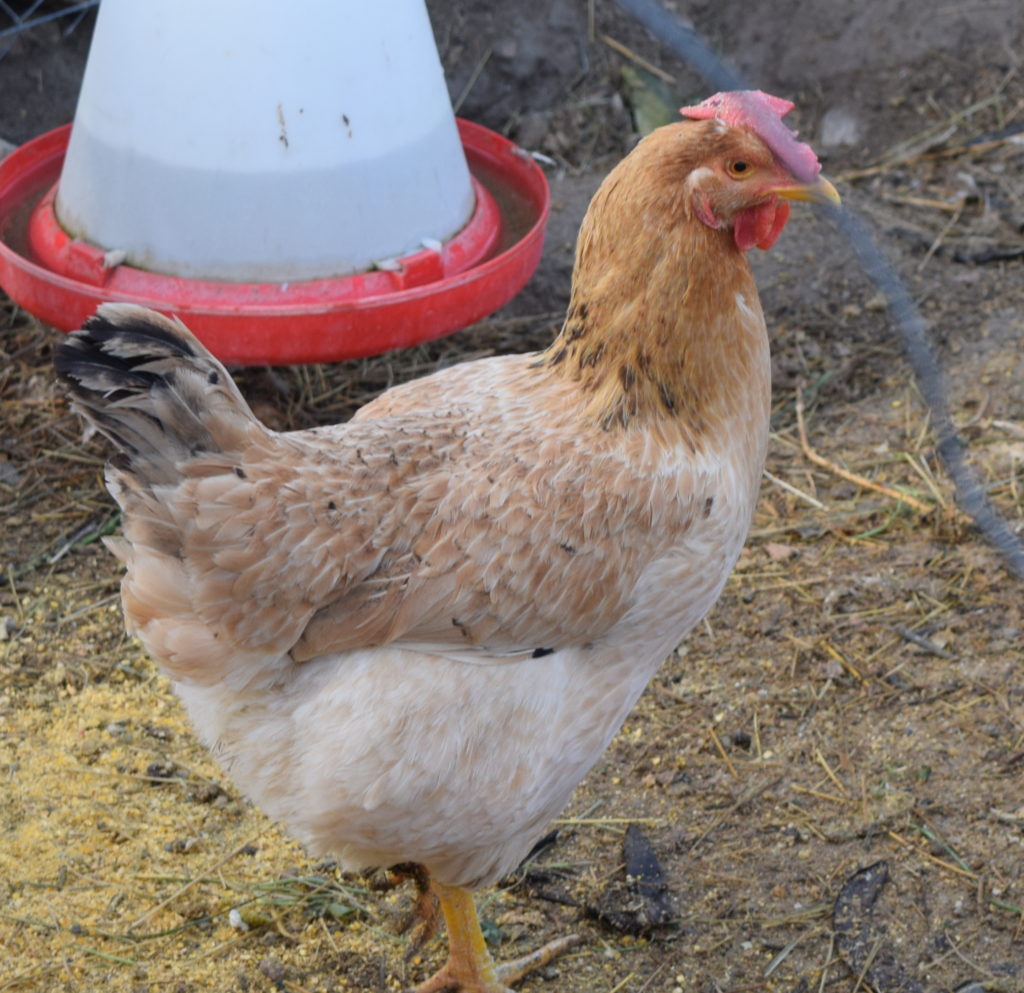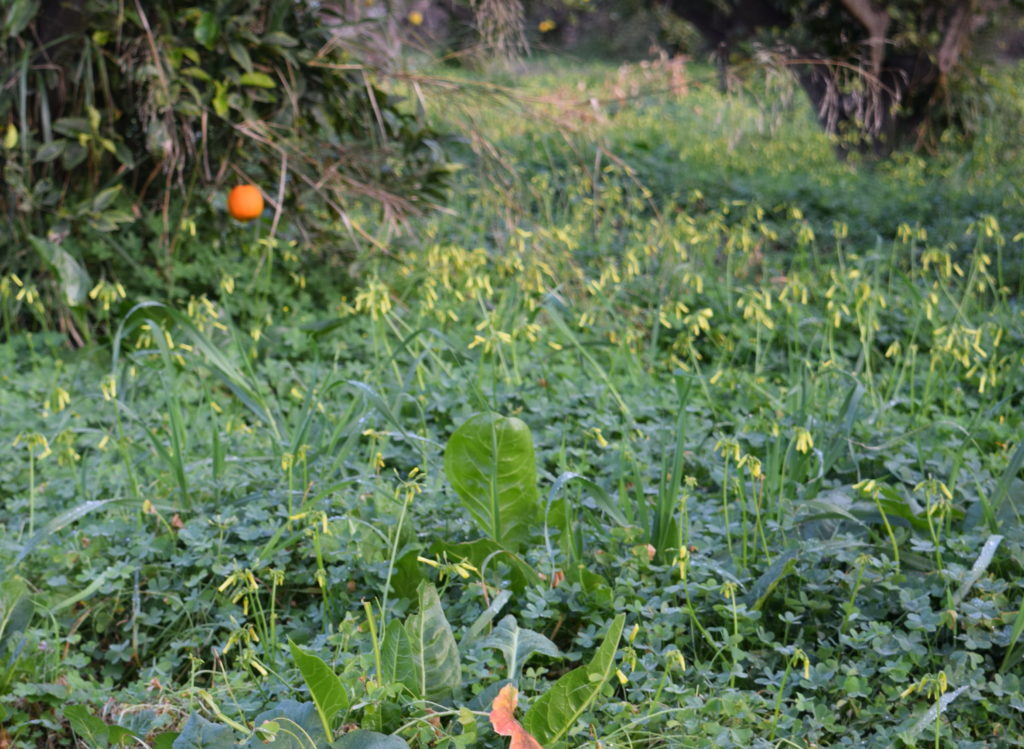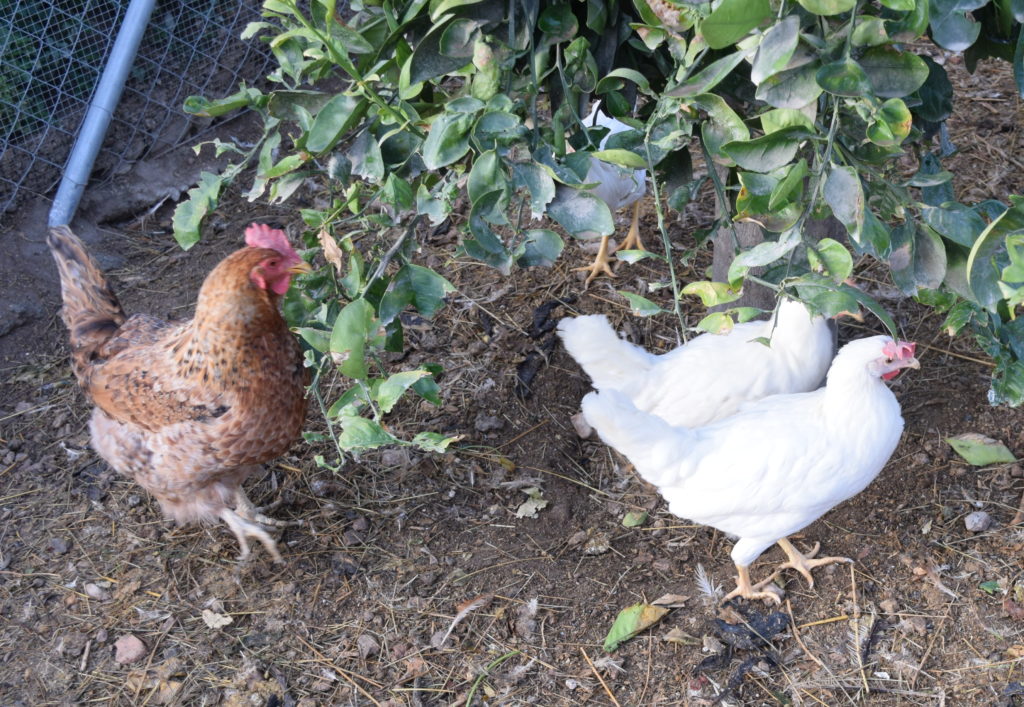It rarely rains here, and this winter has been even dryer than usual. The trees are in dire need of water, so when we had some rain this last week, we were very glad of it.
The only trouble is that when it rains, the chickens’ and ducks’ food turns into a slurry in the feeders, and unless they are prepared to eat it like soup, it soon goes mouldy.
We have been trying the chickens with metal feeders, as the strong sunshine here destroys the plastic ones, but the metal ones allow the ladies to turf a lot of the feed onto the ground, where it gets trampled and dirty. They will not eat it off the ground, so they waste more than they consume, which offends me no end. (There are poor little chickens in Africa who would love the chance to eat that food!)

This is what I got when I Googled “African hen!” (“African chicken” just brought up recipes.)
We decided we would drop in to the shop where we bought our first supplies, as we had to make a trip over in that direction. We could see what our options were regarding feeders and it would give me a chance to enquire after Doodle Doo while we were there. (Doodle Doo became so aggressive with me that I could not enter the chicken pen without a hefty lump of wood to fend him off. We gave him to the chicken man, in the hope that he could re-home him, or failing that, do the unthinkable deed when we were not around. Doodle Doo was very happy to be among a huge number of chicken ladies, but was so aggressive that the chicken man sent him to live at his Dad’s place.)
As I always do, I had a quick look to see if there were any chicken ladies for sale. A black hen with her beak uncut is a sort of Holy Hen Grail for me, but usually all the suppliers have hens with cut beaks. It is supposed to stop them fighting or pecking at eggs, but it leaves the poor girls mutilated and not able to eat properly or defend themselves against bullies.

They all look very much alike
Chicken man did not have any black hens, but he did have some very pretty white hens and a pale brown, larger lady, all with uncut beaks. We decided it was an opportunity too good to be missed. We were down to five ladies and Jonathan for various reasons, so it seemed a good idea to add another four. One or two would be bullied mercilessly, but four gave them a chance to assert themselves and integrate peacefully.
It took no time at all for chicken man to wrangle the brown lady and three white ones into a large box. We collected the new plastic feeder we had chosen, asked after Doodle Doo (someone bought him and last they heard, he was doing fine) and headed for home.
Introducing new birds when the incumbents have gone to bed for the night generally seems to work best. Had I known we were going to have new ladies to install, I might have prepared before it was dark. Holding a torch whilst trying to remove the partition between the two halves of the coop and take out the spare sawdust, nest box and feed bucket stored in the empty half was an interesting experience. The original ladies and Jonathan watched somewhat blearily, but showed no signs of agitation. I thanked heaven for small mercies.

The plastic feeders are better at preventing excessive waste. However, as you can see if you look closely, the sun tends to make them perish. This one is bleached and has a hole in it.
Lifting the box with the four new ladies, while holding a torch, proved too much for me. I dropped the lot. There were a couple of muffled complaints, but so little kerfuffle had me concerned that someone was hurt. I needn’t have worried. The pale brown lady scrambled out of the box and legged it into the dark. The three white ladies were so comfortable and sleepy in the box that I had trouble persuading them out and onto the perch. I ended up picking them up individually and arranging them in a row, ensuring their feet were in the right place. I am not at my best when semi-awake, so I did not feel I could pass judgement on their rather clueless behaviour.
Finding and catching the brown lady proved far too difficult in the dark, so I left her sitting quietly at the far corner of the understory. She would not come to any harm there, so upsetting her further would be unnecessary and unkind.

This one has a very pretty pinkish tinge to her feathers
I leaned the partition and some old shutters against the sides of the run, to provide some hiding places for the new ladies and retired for the night.
The next morning, courtesy of a full bladder and a super moon, I was awake very early. I decided to have a cup of tea and give the ladies time to wake up. I would then go down and see how they were getting on, armed with some juicy weeds, which they all seem to love.

Lush weeds and wild chard grow under the orange trees at this time of year.
I was pleasantly surprised to see that the two groups were occupying opposite ends of the run and all was peaceful. I spread some weeds and waited to see what would happen.
As I expected, Bebe and Cecille were up for a bit of bullying, but they were confused by the new ladies being able to divide and hide. Everything was remarkably civilised. The only remaining potential problem was that Candelabra normally lurks at the far end of the pen, because she is lowest in the pecking order. The new girls were showing a preference for that end as well.
Much to my amusement, Candelabra did not try bullying them at all. She just followed them about, clucking and muttering. It seemed to me that she was rather politely trying to explain to them that she would now be relinquishing her place at the bottom of the pile, if that was alright with them, if they didn’t mind too terribly much, no offense, etc etc.

Candelabra politely asserting herself
Two days on, the two groups are not really integrated, but they are co-existing perfectly happily. This is all very gratifying. All that remains is to choose names for the new ladies and to wait for our first white eggs, which should arrive in the next two or three weeks.

